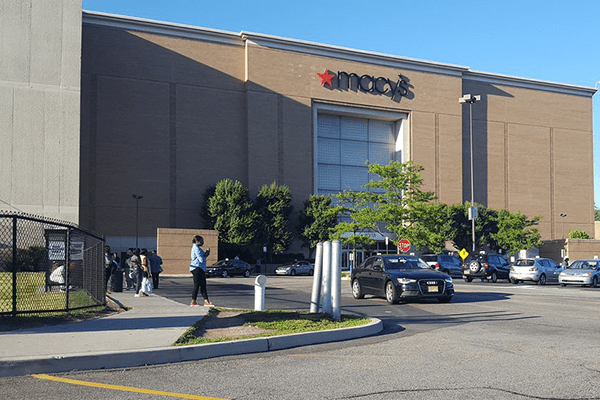Macy’s At Palisades Center Still Viable But May Be Eyeing A Downsizing In Space?
RETAIL ANALYSIS
Macy’s, which is fighting for its life, plans to open smaller, non-mall locations as it shutters many of its mall anchors.
Sources close to the Palisades Center say Macy’s is still on solid ground though it might opt to downsize at some point. That fits with what CEO Jeff Gennette recently said. “We continue to believe that the best malls in the country will thrive,” he said. “However, we also know that Macy’s and Bloomingdale’s have high potential in off-mall and in smaller formats.”
Macy’s plans to open several smaller “off-mall” Macy’s and Bloomingdale’s stores over the next two years. In February, Macy’s said it would close its underperforming stores in the weakest US malls and explore ways to expand beyond malls. The company has nearly 800 locations in the US, including its Macy’s and Bloomingdale’s department stores, beauty retailer Bluemercury, and its off-price outlets.
Macy’s is still the biggest tenant at US malls, according to a report that month by CoStar, a real-estate information firm.
Macy’s test stores will reportedly be opened in Dallas, Atlanta and Washington.
The Palisades Center has lost anchors J.C. Penney and Lord & Taylor, as well as Bed Bath & Beyond, which occupied more than 45,000 square feet.
Gennette noted high-end malls filled with restaurants and activities are a magnet for shoppers but the company can’t rely on malls the way it used to, and many of those malls will no longer be able to count on Macy’s to fill large anchor spaces.
In June, Macy’s Inc. dodged bankruptcy after it secured around $4.5 billion in financing. Competing department store chains such as J.C. Penney and Neiman Marcus did not fare as well in light of coronavirus-related store closures and filed for Chapter 11 bankruptcy in May.
For the second fiscal quarter ended Aug. 1, Macy’s net sales fell from $5.55 billion to $3.56 billion, a 36% setback that was widely expected and mirrored by other department store chains. The COVID-19 contagion has been tough for most businesses but downright brutal for retailers.
Year to date, retailers have announced plans to close nearly 130 million square feet of store space. More than half of this space is leased by five traditional retailers: Macy’s, J.C. Penney, Macy’s, Stein Mart, Bed Bath & Beyond and Pier 1 Imports. Rockland County has already lost one Macy’s, one J.C. Penney’s, one Bed Bath & Beyond and Pier 1 Imports.
Rather than accepting and then sitting on inventory it would struggle to sell, Macy’s total merchandise-on-hand was scaled back by 27% quarter over quarter from $4.92 billion to $3.58 billion. Macy’s followed the same playbook as competitors Dillard’s and Kohl’s.
“Over the next two years, we will open several smaller format off-mall Macy’s and we will test a smaller format off-mall Bloomingdale’s,” Gennette explained. “
The pandemic has shown how vulnerable malls are – and were, even before the crisis. Retail bankruptcies are mounting and stores are closing because shoppers may be unable or unwilling to return to crowded in-door spaces for some time still. RCBJ has reported that Simon Property Group, the largest mall owner in the US, has been holding discussions with Amazon about turning some of its empty spaces into e-commerce fulfillment centers.
More than half of brick-and-mortar space operated by retailers that made closing announcements in 2020 are located within malls.
Data suggests malls will experience a disproportionate share of move-outs in the near term, while neighborhood strip malls should fare better. Retailers like Macy’s, along with Barnes & Noble and others that are talking about smaller footprints, are likely to relocate to smaller spaces inside malls or to mid-size spaces in commercial centers.
Over the next 12 months, an increase in retail vacancy will ultimately be driven by pandemic-related closures, which is why mall vacancies are expected to expand by more than double that of the next highest center type, according to Co-Star. Mall vacancies are forecast to rise from the middle of the pack, at about 5.6% in the second quarter of 2020, to the highest level for all center types, at 9.3% 12 months later.









